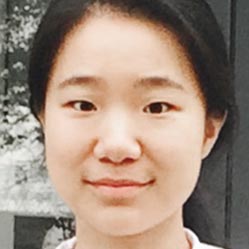From Engineering to User Experience
 By Qifang, user experience researcher
By Qifang, user experience researcher

 By Qifang, user experience researcher
By Qifang, user experience researcher

I have always immensely enjoyed the process of talking to users, synthesizing their inputs, and using the insights to form guidelines to improve designs. Though my bachelor’s, master’s, and Ph.D. degrees are all in mechanical engineering, my graduate research tied in the user perspective, focusing on human-centered design for engineering products. In my research projects, I conducted interviews, surveys, and in-lab studies to understand user needs and preferences.
When I was exploring the job market upon graduation, I learned about user experience (UX) as a career option and found that it perfectly aligned with what I had enjoyed doing in academia. I heard about the UX opportunity at MathWorks from a friend who was in UX at MathWorks and had an academic background similar to mine. Her positive experience at MathWorks inspired me to apply. During the interviewing process, I became convinced the opportunity would hit the sweet spot where my passion for UX research intersected with my engineering background. It has been three years since I joined MathWorks, and my expectations have been met—and exceeded.

Commencement with my parents.
As an engineering student, I used MATLAB in numerous courses and research projects. That experience helped me easily empathize with our users. Every day at work, I’m motivated by the thought that my effort contributes to the creation of easy-to-use software that helps engineers and engineering students like I was.
One of my favorite activities as a UX researcher at MathWorks is conducting user interviews. Many of our users are engineers and scientists who use MATLAB and Simulink products in their research and development work. I find it fascinating to learn about their stories, their exciting projects, the ways products we design help them make breakthrough discoveries, and their perspectives on how the products can be improved. I try to stand in the users’ shoes, learn what they need and want, and then design products that can best support them in achieving their goals.
Every day at work, I’m motivated by the thought that my effort contributes to the creation of easy-to-use software that helps engineers and engineering students like I was.
One particularly rewarding project was redesigning the Curve Fitting app, which enables users to interactively fit curves and surfaces to data and create plots. The app was originally developed more than a decade ago, and the team wanted to modernize its graphics interface and improve its ease of use.

Curve Fitting app design workshop.
To better understand what users liked about the old app and what could be better, I first helped the team conduct a series of user interviews to learn about users’ current workflows. From the interviews, we learned that users loved the interactive nature of the tool and appreciated that they got immediate visual feedback on their fittings to the data. We also identified a few common pain points—for example, some useful features were buried deep down in menus and were hard to discover, and some commonly used features were hidden from the main interface and needed extra steps to get access to.
All of these findings were used to guide the app redesign. Later in the project, I helped the team evaluate the new design in usability tests and used the results to further refine the design. It was exciting to hear in the usability tests that users found the new design “clean” and “straightforward” to use. And it is exciting that the new app will be available to customers in the near future.
Another thing I deeply enjoy at MathWorks is working with extraordinary colleagues.
I work closely with the cross-functional teams in the product areas that I support (including Statistics and Machine Learning Toolbox, Curve Fitting Toolbox, and Deep Learning Toolbox). The teams, which include people from Development, Quality Engineering, and Documentation, often gather to brainstorm ideas for new designs, discuss usability study observations, or review design proposals. I’m constantly inspired by different perspectives brought up by different people and find myself learning new things about the products and the domain all the time.
I’m constantly inspired by different perspectives brought up by different people and find myself learning new things about the products and the domain all the time.
The UX department also provides numerous opportunities for UX researchers and designers to work together and share knowledge. I have learned about new methods and best practices of user research and user interface design from UX symposiums and data snack sessions. I have also learned a lot directly from my peers by collaborating with them on fundamental research projects.

UX team virtual outing: succulent terrarium design.
In addition to the professional support and growth opportunities my teammates provide, I also enjoy the social interactions with them and the feeling of community we share. The daily interactions with my colleagues are filled with trust, respect, and open communication. A few times a year, we participate in group activities—virtually since the pandemic—that bring us closer together.

UX team Halloween pumpkin carving.